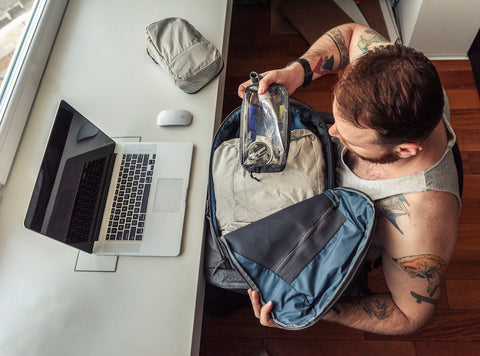Minimalism is a mindset, and decluttering is an ongoing process. Both will lead to increased focus, higher work output, and lower stress levels, but getting the balance between convenience and simple living takes constant tweaking. Like anything aimed at improving your quality of life, becoming a minimalist will require building daily habits. These may include physically rearranging your space or adopting different thought patterns. If you are looking to kickstart a more consciously minimalist way of life, then these simple minimalist habits and organizing ideas can help you to achieve this.
Check Out Project 333
The Free Dictionary defines a habit as a “recurrent, often unconscious pattern of behavior that is acquired through frequent repetition.” By committing yourself to a particular behavior for a specified length of time, you will begin to adopt this lifestyle automatically and will find it hard to stop. That’s why concepts like the 333 fashion project are great ways of acquiring a minimalist lifestyle.
The idea is to spend 3 months living with just 33 items of clothing, including shoes and accessories. 33 pieces seem to be the perfect number. It is enough that you won’t feel constrained when choosing an outfit, but it is still far less than most people have in their closet. 3 months is short enough to feel achievable but long enough that you will have built a new habit by the end of it. Try to have an outfit planned for every day. When you wake up, you won’t even need to think about getting dressed.
Fashion is always a great place to start as a minimalist. When traveling, clothes fill the bulk of your backpack, so learning to wear less will help you to pack light. Time wasted on picking an outfit each morning is the time that can be dedicated to working. Have you ever noticed that Mark Zuckerberg, Steve Jobs, and Simon Cowell are always seen wearing the same clothes? That explains how they get so much done. They know they look good each day because they have chosen outfits that are comfortable and practical.

Clear Your Surfaces
Part of becoming a minimalist is getting used to empty space. Window sills, cabinets, and desks all tend to acquire decorative items, which serve no purpose and provide no value. Feel comfortable in taking things off shelves and letting them be empty. A potted plant here or a few books there can add creativity and color to a workspace, so don’t feel constrained to complete emptiness. However, often less is more in terms of both aesthetics and productivity. Surfaces will become easier to clean, and you will spend less time looking for items. This all creates more time to dedicate to work and creative projects.
A good trick is to take two drawers, say, in your desk. Put everything into one drawer, but every time you use an item, put it back into the other drawer. After about a month, you will have one drawer full of things you have used and one full of things you haven’t. Go through the latter and decide whether you really need that stuff.
Organize Your Digital Life
Professionals check their emails every 37 minutes, wasting 2.6 hours a day rummaging around their inbox. This is the time that could be so easily redirected to more critical tasks. From now on, unsubscribe from every email you receive that you don’t need. It only takes slightly longer than deleting the email but will save you time in the future.
Rather than continuously checking emails, dedicate blocks of time to it. This could be 15 minutes before lunch and then 15 minutes just before you finish for the day. Time blocking in this way allows you to focus more intensely and get the task done more quickly. This is good advice for any job that needs doing, but start with email and see what difference it makes. Also, organize all your files into the right folders to prevent time wasted looking for documents.
Take Time Each Morning for Gratitude
A big part of building minimalist habits is about adopting the right mentality. If you have been raised in a consumerist culture, then the urge to buy more is overwhelming. Reprogram your mind by taking just a couple of minutes each morning to say thanks for the items you have. This isn’t a religious practice (although it could be if that helps), but more a way of creating the right thought patterns. Kickstart your day with a quick minimalist morning routine that will make all the difference.
You could write in a journal about being grateful that you have all you need or just say it out loud. It might feel silly at first, but over time, you will be building a pattern of thought that is impossible to break. A few minutes repeating a mantra of gratitude could save hours wasted wandering the shopping malls.

Live Out of a Backpack for a Month
The more you travel, the more you realize how little you need. When people move house, they often load countless boxes into a removal truck, yet when they go on vacation, they can fit everything into our Arcido Akra backpack. Why wait until you travel to learn this lesson? Find a solid backpack, fill it with everything you think you need for a month, and live out of it from the comfort of your own home. When the month is up, look at everything else in your home and consider if you really need any of it.
Building minimalist habits is the most effective path to a happy and productive life. Downsize your wardrobe, clear your surfaces, declutter your digital files, and express gratitude for the things you have. Consider packing everything into a minimalist travel backpack to really gauge what you need to feel comfortable and happy. Whether on the road or living at home, you’ll automatically start to live a simplified and focused life.
Written by Thom Brown



